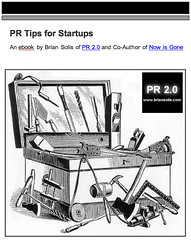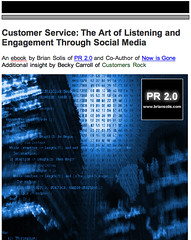The Start-up’s Dilemma: Competing Against Cash-Rich Rivals through the Art of PR
The art of PR should never be underestimated it should be thoroughly embraced.
New companies that enter markets with well-established competitors may have great solutions and truly superior designs, but they also have an intractable problem. The competition is established, they are not, and markets always bend toward the familiar.
Add to that the typically limited budget of a start-up and the barriers are high enough to predestine new companies to failure unless they have a very effective mechanism of some sort, in place and ready to help carve a piece of the existing market for themselves.
At the end of the business day, it all comes down to building awareness among potential customers, despite the din and noise that a cash-rich, established rival can typically raise. There are many ways to build bridges to potential customers, and the best method depends on the company, its products or services and its potential customers or markets. No single formula fits all.
But for maximum effect, nothing comes close to Public Relations for effectively building a market presence, especially when funds are limited. PR is simply the most credible way to get a company’s message across. Any company can buy advertising space, and audiences know this. A well-designed PR initiative gives a company exposure that has not been bought. Potential customers know the difference between articles and ads.
Study after study shows that people believe what others say about a company before they believe what a company says about itself. Reviews and articles are simply more believable than paid ads.
Because of this well-established principle, a start-up that plans to go head-to-head with a deep-pockets competitor using ads to differentiate itself will almost always lose. Few start-ups have pockets deep enough to vie for attention with established competitors. But the right PR, carried out by the right team, can raise a company’s credibility immediately with the media while it cultivates both mindshare and market share in its targeted markets. It won’t matter how loudly the competition’s ads beat the drums if it’s the new player that gets the kind of credible exposure that drives markets.
Successfully creating and cultivating strategic presence in a market is challenging. Both the company and its PR team must start with a solid understanding of its products and services, including how they impact markets, before designing a plan of action. This understanding must include a clear idea of where the new player fits in against other players, its own weaknesses as well as its strengths as a company and as a solution. The company’s leadership must be ready to discuss both, without dodging the hard questions or doubting the company’s rightful place in the market.
Such discussions can be grueling, because the kinds of market influencers who can do the most good are also those with the greatest stake in being right, and unlike a company’s internal staff, they will not shy away from asking questions that might make an unprepared executive stumble. The right PR agency will brief an executive thoroughly on the audience being reached, its specific markets, the needs of both, and the analyst or journalist being briefed. Briefings will need to be repeated frequently, because both the influencers and their audiences have grown too sophisticated for one approach to fit all.
For PR pros working with a start-up technology account, the responsibility includes becoming familiar with the technology and doing the background homework to be effective:
• Have solid lines of communications to top-tier journalists and analysts, so you can become a trusted news source, not just a pitch person• Be qualified to answer media questions intelligently and knowledgeably and know when to refer questions to other executives or staff
• Know how to use "guerilla" tactics as well as traditional channels to increase market recognition
• Know how to combine traditional and new-media strategies effectively to create the kind of instantaneous buzz that only the Internet can make possible
• Set realistic goals for a PR program and devise ways to measure your results
The principles are the same for a company that “goes it alone” without expert PR help:
• Know which markets are appropriate and do not waste time and resources on markets with no bearing on your products or services
• Determine how your target markets gets news and then tailor your campaign to make it relevant to EACH audience – one story doesn't apply to everyone
• Know whether to focus on TV, newsletters, online communities, magazines or other news outlets for your particular product or service, and when to expand to another type of media outlet
• Avoid a pure technology focus –highlight the benefits to your specific markets
• Ditch the hyperbole if you want journalists to take you seriously – skepticism is rampant, especially when the market bulls become bears
Finally, companies need to remember that in PR, you generally get what you pay for. The right team will know what it is doing and will be ready to show you measurable results for your investment. If an agency isn’t willing to pledge that level of accountability – turn your back and find another agency.
Brian Solis is founder and president of FutureWorks, Inc., an award-winning technology PR agency with offices in Silicon Valley and Orange County.












0 Comments:
Post a Comment
<< Home